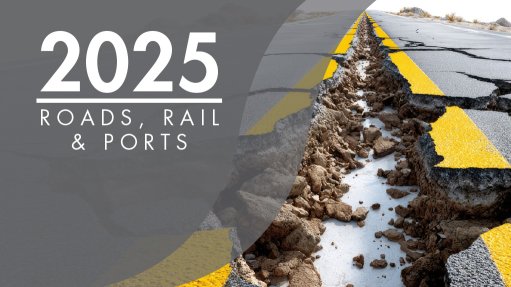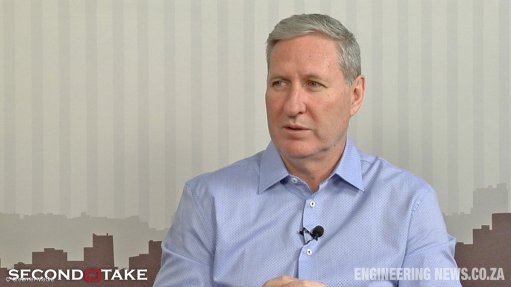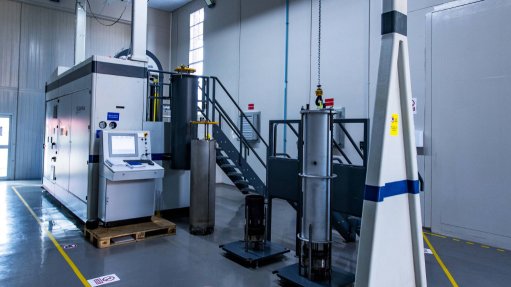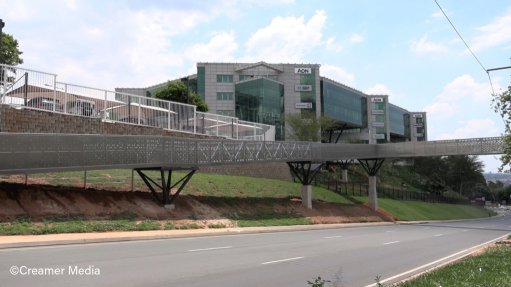Renewable energy projects retained cost advantage over fossil fuels in 2024 – Irena
Solar PV power projects were 41% cheaper on average than the lowest-cost fossil fuel alternatives in 2024, while onshore wind projects were 53% cheaper on average than fossil fuel projects, the 'Renewable Power Generation Costs in 2024' report by intergovernmental agency International Renewable Energy Agency (Irena) shows.
In 2024, 91% of new renewable power projects commissioned were more cost-effective than new fossil fuel alternatives.
The addition of 582 GW of renewable capacity in 2024 led to significant cost savings, including avoiding fossil fuel use valued at about $57-billion. Renewables are cost-competitive compared to fossil fuels, but also limit dependence on international fuel markets and improve energy security, the agency notes.
Renewables maintained their price advantage over fossil fuels, owing to cost declines driven by technological innovation, competitive supply chains and economies of scale, Irena adds.
Regions such as Africa, South America and Asia, with stronger learning rates and high renewables potential, could see pronounced cost declines.
Higher costs are likely to persist in Europe and North America, owing to structural challenges such as permitting delays, limited grid capacity and higher balance-of-system expenses.
Stable and predictable revenue frameworks have been found to be essential to reducing investment risk and attracting capital, the report's analysis of the structural cost drivers and market conditions shaping renewable investment shows.
Mitigating the financing risk is central to scaling-up renewables in mature and emerging markets, Irena notes.
Instruments such as power purchase agreements (PPAs) play a pivotal role in accessing affordable finance, while inconsistent policy environments and opaque procurement processes undermine investor confidence, it points out.
Additionally, technological advances beyond generation are also improving the economics of renewables.
The cost of battery energy storage systems (BESS) has declined by 93% since 2010, reaching $192/kWh for utility-scale systems in 2024. This reduction is attributed to manufacturing scale-up, improved materials and optimised production techniques.
Battery storage; hybrid systems, combining solar, wind and BESS; and digital technologies are increasingly vital for integrating variable renewable energy. AI-enabled digital tools are enhancing asset performance and grid responsiveness, it adds.
However, digital infrastructure, flexibility, and grid expansion and modernisation remain pressing challenges, including in emerging markets, where the full potential of renewables cannot be realised without further investment, the Irena report highlights.
COSTS RISKS
However, while continued cost reductions are expected as technologies mature and supply chains strengthen, short-term challenges remain.
Geopolitical shifts, including trade tariffs, raw material bottlenecks and evolving manufacturing dynamics, particularly in China, pose risks that could temporarily raise costs, Irena warns.
“Integration costs are emerging as a new constraint on the deployment of renewables. Wind and solar projects are increasingly delayed owing to grid connection bottlenecks, slow permitting and costly local supply chains.
“This is acute in G20 and emerging markets, where grid investment must keep pace with rising electricity demand and the expansion of renewables,” the report says.
FINANCING COSTS
Financing costs remain a decisive factor in determining project viability, the report states.
In many developing countries of the Global South, high capital costs, influenced by macroeconomic conditions and perceived investment risks, significantly inflate the levelised cost of electricity of renewables, the report states.
For example, Irena found that while onshore wind generation costs were similar in Europe and Africa, at about $0.05/kWh in 2024, the cost structures varied significantly.
“European projects were capital-expenditure driven, while African projects bore a much higher share of financing costs,” it illustrates.
Irena’s assumed cost of capital ranged from 3.8% in Europe to 12% in Africa, which reflects differing perceived risk profiles, it adds.
“Rising geopolitical tensions, trade tariffs and material supply constraints threaten to slow the momentum and drive up costs.
“To safeguard the gains of the energy transition, we must reinforce international cooperation, secure open and resilient supply chains, and create stable policy and investment frameworks, especially in the Global South,” says Irena director-general Francesco La Camera.
“New renewable power out-competes fossil fuels on cost, offering a clear path to affordable, secure and sustainable energy. The transition to renewables is irreversible, but its pace and fairness depend on the choices we make today,” he adds.
“Clean energy is smart economics, and the world is following the money. Leaders must unblock barriers, build confidence and unleash finance and investment. Renewables are lighting the way to a world of affordable, abundant, and secure power for all,” says UN secretary-general António Guterres.
Article Enquiry
Email Article
Save Article
Feedback
To advertise email advertising@creamermedia.co.za or click here
Comments
Press Office
Announcements
What's On
Subscribe to improve your user experience...
Option 1 (equivalent of R125 a month):
Receive a weekly copy of Creamer Media's Engineering News & Mining Weekly magazine
(print copy for those in South Africa and e-magazine for those outside of South Africa)
Receive daily email newsletters
Access to full search results
Access archive of magazine back copies
Access to Projects in Progress
Access to ONE Research Report of your choice in PDF format
Option 2 (equivalent of R375 a month):
All benefits from Option 1
PLUS
Access to Creamer Media's Research Channel Africa for ALL Research Reports, in PDF format, on various industrial and mining sectors
including Electricity; Water; Energy Transition; Hydrogen; Roads, Rail and Ports; Coal; Gold; Platinum; Battery Metals; etc.
Already a subscriber?
Forgotten your password?
Receive weekly copy of Creamer Media's Engineering News & Mining Weekly magazine (print copy for those in South Africa and e-magazine for those outside of South Africa)
➕
Recieve daily email newsletters
➕
Access to full search results
➕
Access archive of magazine back copies
➕
Access to Projects in Progress
➕
Access to ONE Research Report of your choice in PDF format
RESEARCH CHANNEL AFRICA
R4500 (equivalent of R375 a month)
SUBSCRIBEAll benefits from Option 1
➕
Access to Creamer Media's Research Channel Africa for ALL Research Reports on various industrial and mining sectors, in PDF format, including on:
Electricity
➕
Water
➕
Energy Transition
➕
Hydrogen
➕
Roads, Rail and Ports
➕
Coal
➕
Gold
➕
Platinum
➕
Battery Metals
➕
etc.
Receive all benefits from Option 1 or Option 2 delivered to numerous people at your company
➕
Multiple User names and Passwords for simultaneous log-ins
➕
Intranet integration access to all in your organisation














